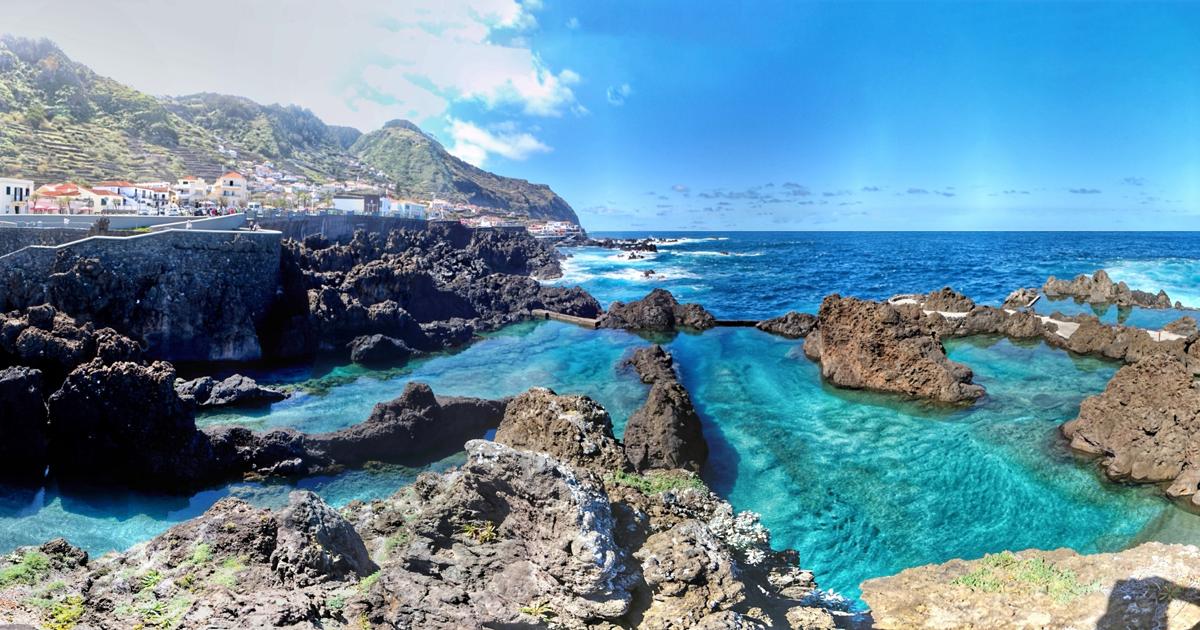Relatives of victims leave carnations on the boxes with the remains of the victims of reprisals before being deposited in the Pico Reja columbarium-memorial, which was inaugurated last Monday in the Sevillian cemetery. Paco Puentes
Some wavy blocks of gray concrete have broken for a few days with the monotonous rows of white and horizontal niches that order the Sevillian cemetery of San Fernando.
These ashlars deliberately break the aesthetics of the Seville cemetery to draw attention to the place that for 87 years hid one of the examples of the violence of the Civil War and Francoism: the mass grave of Pico Reja.
The largest in Spain and the second largest in Western Europe after Srebrenica, in Bosnia Herzegovina, according to the Aranzadi Studies Society, which has coordinated the team of forensic technicians in the exhumation.
In the three years that it has remained open, more than 10,000 mortal remains have been extracted from the grave;
of them, 1,786 of reprisals for the uprising and the dictatorship,
When the work began on January 20, 2020, the team of archaeologists from the Aranzadi society thought that it was going to deal with an exhumation work of some 850 victims of the repression and 253 people killed for other reasons, limited to a period between between 1925 —when it was believed that the grave had been opened— and September 1936, just at the beginning of the Civil War.
Soon, the evidence showed that they were facing a greater and extremely complex challenge.
"There were deposits of intact victims, others removed, collective burials, victims in coffins... We went from a two-month chronology of 1936 to delving into the late 1940s," explains Juan Manuel Guijo, the anthropologist who has directed the work. of exhumation.
The depth where the remains of the reprisals murdered in the summer of 1936 were found has shown that it was then that the grave was opened, because no previous vestiges have been found.
Subsequently, they were mixed with the corpses of other population groups, such as prisoners who died from hunger, the sick, people with amputations, children... "In the grave they do not rest in peace because they are in unlikely positions, then they move, they accumulate other corpses without any funeral protocol.
They were, with all due respect, the pariahs of the time.
10,076 remains of human beings have been removed from the earth: 1,786 retaliated against by Francoism and more than 8,000 that have nothing to do with the victims of the dictatorship.
"Pico Reja is the morphology of Franco's repression," describes the anthropologist.
The fact that this grave was not respected —which, in theory, was opened to house and hide the executed during the first months of the uprising (particularly violent in the Andalusian capital)— is, for the archaeologist, a sign of the "impunity and lack of consideration for human beings" of those responsible for the regime at that time.
During the first years of the Franco regime, it was opened and reopened to dump the corpses of those who lived in the Sevillian marginality.
“It is an indifference that we have not seen in other graves and stages the seed of hatred that was to germinate later,
Pico Reja is powerful evidence of the "great repression" that the insurgents exercised in the first months of the Civil War in Seville and of their strategy to eliminate evidence of that oppression, according to historian José María García Márquez, one of the ones that handles the most data on the identities of those who could be buried there.
“Between July 20 and December 31, 1936, official data says that 2,900 people were shot in Seville, but in the Civil Registry there are only 97 entries, of which 44 correspond to members of the column mining company that came from Huelva”, says García Márquez.
“The logistics of death is very particular.
When you are shooting for so long, you have to open and close the pits, ”he adds.
The expert understands that the addition of new corpses throughout the 1940s is also another example of repression during the dictatorship and the "differentiated and class-based treatment" of its leaders.
“Many were beggars, sick or people who could not afford a funeral or a coffin.
And prisoners who died of hunger.
Because hunger wreaked havoc in the city of Seville.
Hunger became a weapon of war by the regime, ”he adds.
Coins minted by the Third Reich to date the grave
Coin minted by the coup leaders in Austria during the III Reich found in the Pico Reja pit.
/ ARANZADI SCIENCE SOCIETY
The Spanish coins minted in 1937 —with the legend:
second triumphant year
― in the Austria of the III Reich by order of Ramón Serrano Suñer, but which began to circulate in Spain in 1938, are among the few remains, along with small medals, shoe soles or a municipal uniform button, that archaeologists have found among the bones of the victims of Pico Reja.
These pieces were key to dating the date of death of some of them, evidencing that the grave was not closed in 36, as had been established.
The dendrochronology of a tree that had been planted on the chasm made it possible to fix the date on which it began to take root there in the second half of the 40s, confirming that the pit continued to be used then.
The upper jaw of a tooth also gave the terrible news that a skull with a bullet impact in the parietal belonged to a 12-year-old boy.
“This hole in this skull is one shot, and like this one, a thousand more.
This is what has been documented at Pico Reja.
Society is being told that the repression existed, that it was true and that we cannot stop explaining it,” says historian José Villa.
"The dictatorship was capable of annulling history and creating the fear of knowing it," he abounds.
For Villa, the 1,786 victims identified and the rest of the corpses that accumulated afterwards confirm that the military coup was not a one-off response, but rather formed part of a sociopolitical process forged a long time ago: "Pico Reja highlights the cruelty of some social classes that were not willing to lose the absolute power they had held.
The murdered: workers, day laborers or republicans, are for them rubbish, waste, that is their social value”.
The 12-year-old boy is the youngest corpse with signs of violence found in Pico Reja.
“But there are several minors between the ages of 16 and 17 with bullet wounds in the grave.
Also women, 10% of the victims, more than we expected”, says Guijo.
One of them could be Reyes Santos, a dressmaker from Triana who belonged to the communist youth and had written an article about an anti-fascist women's association.
"They took her from home in August 1936 and one day, my aunt, who was the one who was going to bring her food to the jail every day, returned alone with her watch, which had stopped at 3:30 in the morning," she says. her granddaughter, Lola Díaz, who has not yet been able to visit the columbarium.
Her grandmother was 30 years old and Díaz's mother barely remembered her.
"At home the one who talked about the matter was my great-aunt," she laments.
Physical evidence has not allowed identification.
Each corpse has its own report in which all the physical and morphological details are reported, as well as the evidence of torture, which will allow the search to be narrowed when the DNA is checked.
The memorialist associations have been the main people responsible for the fact that archaeologists have made the earth speak to bring to light the reality and scope of the massacre perpetrated by the insurgents during the War and the Dictatorship and that they wanted to bury under the clay.
Empty Pico Reja, it is the turn of the nearby Monument pit.
"There is still a lot to investigate, it seems that a similar number of corpses will be found," says Guijo.
Historians have documented that after the coup all of Seville became a prison and a grave.
Pico Reja confirms this almost nine decades later.
"Archaeologists touch history with their hands, we with the papers," says García Márquez.
DNA, the pending subject
The Pico Reja columbarium hides the grave, but does not bury anything.
“It leaves us with a bittersweet taste, because it is late.
Many children and victims, who were alive, have passed away at this time.
DNA is key right now, but a bottleneck is being created in the laboratory in Granada," warns Luis Naranjo, former commissioner of Historical Memory and spokesman for the Memorialist Assembly.
Aranzadi's team has sent 1,107 samples from the victims found in Pico Reja to the reference laboratory of the University of Granada, and there are 450 more to send, which would add up to a total of 1,557.
Of these, the Board has confirmed to EL PAÍS that 300 have been analyzed and that, after checking with 298 relatives, no matches have been found.
The first results have been a long time coming.
“After more than 80 years,
the DNA is very deteriorated and you have to be very aware that it will be difficult to find matches.
But you have to speed up.
It can't take another 80 years to get the results.
The Board must double the agreement with the laboratory [300,000 euros] because, until now, 100 samples had arrived, but we must add the 1,000 from Pico Reja, those from Cádiz, those from Nerva and those that will come”, warns José Estanislao , president of the Coordinator for the Memory of Andalusia.
Subscribe to continue reading
Read without limits
Keep reading
I'm already a subscriber

/cloudfront-eu-central-1.images.arcpublishing.com/prisa/7B6DKG2ICVDSFA3VEMDMLWX6OA.jpg)
/cloudfront-eu-central-1.images.arcpublishing.com/prisa/QY5MBY2P2NDS3GSQJZP5S7XYSA.JPG)









/cloudfront-eu-central-1.images.arcpublishing.com/prisa/KMEYMJKESBAZBE4MRBAM4TGHIQ.jpg)


